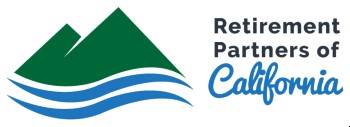SECURE Act 2.0 Offers Incentives to Businesses and Employees for Retirement Plans
Employers and employees can take advantage of the expansion of credits and opportunities created for workplace retirement plans under SECURE Act 2.0.
Here are some key points:
- SECURE Act 2.0 follows the initial phase by Congress to address the retirement crisis in the United States. Setting Every Community Up for Retirement Enhancement (SECURE) Act was signed into law Dec. 27, 2019.
- SECURE 2.0 is an attempt to build on the initiatives already started to help a wide range of Americans achieve retirement security and financial wellbeing.
Its provisions include:
Eligibility Expansion for Small Businesses to Earn Tax Credit
Beginning in 2023, eligible businesses with 50 or fewer employees can qualify for a credit equal to 100 percent of the administrative costs for establishing a workplace retirement plan. The original SECURE Act gave startup businesses with up to 100 employees a tax credit equal to 50% of administrative costs, capped annually at $5,000. Eligible businesses with 51 to 100 employees remain subject to the original SECURE Act provision.
A New Credit for Employer Contribution Costs
Also beginning in 2023, eligible businesses with up to 100 employees might be entitled to a tax credit based on their employee matching or profit-sharing contributions. This credit, which caps at $1,000 per employee, phases down gradually over five (5) years and is subject to further reductions for employers with 51 to 100 employees.
Technical Correction for Small Businesses to Qualify for Startup Credit
If a business offers a retirement plan for the first time by joining a multiple employer plan (MEP) or a pooled employer plan (PEP), regardless of how long the MEP or PEP has existed, they should consult with their accounting professional to see if they are eligible for the credit.
Expansion of Auto-Enrollment
- SECURE 2.0 requires automatic enrollment for new 401(k) or 403(b) plans beginning in 2025. The initial default rate must be between 3% and 10%, including annual auto-escalation of 1%, up to at least 10% but not more than 15%.
- Automatic enrollment in a retirement plan is designed to make it easier for employees to participate. Employees who prefer not to participate can opt out. There is an exception to the requirement for small businesses with 10 or fewer employees, new businesses less than 3-years-old, churches, and governmental plans. To add even more convenience, businesses can integrate automatic enrollment with payroll.
Changes to Benefit a Multigenerational Workplace
- Today’s workplace is more generationally diverse than ever. Older employees are working longer, and Millennials make up roughly one-third of the American workforce. SECURE Act 2.0 addresses these age groups.
- For older employees, the law raises the required minimum distribution (RMD) age from 72 to 73 beginning in 2023, and then to age 75 beginning in 2033. There is also a new catch-up contribution provision beginning in 2025: For those ages 60 through 63, the amount would be increased to the greater of $10,000 or 50% more than the regular catch-up amount for an employer-sponsored 401(k) and 403(b).
- Since today’s workforce includes more part-time workers, they will be eligible to contribute to an employer-sponsored retirement plan. The Act requires employers to allow long-term, part-time workers to defer to their 401(k) plans. Beginning in 2025, part-time employees are required to work two consecutive years and complete at least 500 hours of service in each year to be eligible, a change from the original SECURE Act’s three-years-of-service rule. The law also transforms the current Saver’s Credit that provides millions of low and middle-income individuals with an incentive to save for retirement each year to a Saver’s Match beginning in 2027. The Saver’s Match will be a federal matching contribution deposited to a taxpayer’s IRA or retirement plan.
Student Loan Payment Matching
Student loan debt, according to the Federal Reserve in 2021, impacts 45 million Americans whose combined debt for student loans is $1.75 trillion.
Starting in 2024, the law will allow employers to make matching contributions to an employee’s 401(k) per their plan provisions when an employee makes a student loan repayment, thus enabling the employee to pay off their student loan and save for retirement at the same time.
Retirement Partners Can Help
SECURE Act 2.0 is more comprehensive than what is outlined above, but these are some of the key areas of interest that could impact businesses. Retirement Partners of CA can be utilized to help your business take advantage of implementing and managing a retirement plan.
Disclosures, Sources, and Footnotes
For plan sponsor use only, not for use with participants or the general public. This information is not intended as authoritative guidance or tax or legal advice. You should consult with your attorney or tax advisor for guidance on your specific situation.
Approval 1-408002







